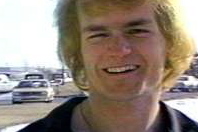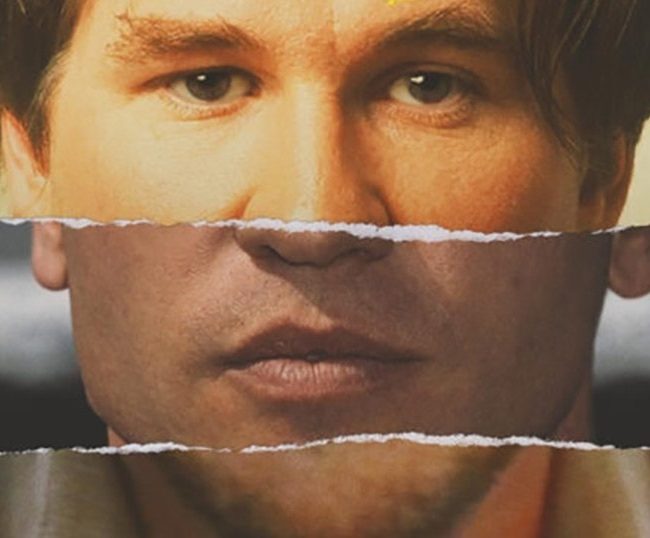BEAVER TRILOGY
(Beaver Trilogy plays at the 92YTribeca this Saturday, September 26, at 8pm. More information can be found here. This screening is the first in a new monthly series curated by the fine folks at Not Coming to a Theater Near You.)
Sometimes ordinary filmcrit hyperbole just won’t do. So let’s try this: take the last ten movies someone described to you as “one of a kind,” “highly original,” and/or “like nothing else I’ve seen before.” Then line ‘em all up against Trent Harris’s Beaver Trilogy, and watch as your ten are revealed as the mere ho-hum, been-there-seen-that knockoffs they surely are. Beaver Trilogy is a stunt that somehow exploded into a work of art, and a documentary/fiction hybrid that raises all kinds of endlessly chewable questions about the nature of performance, the ethics of representation, and much more.
The trilogy begins in 1979 with a documentary portrait of a young man from Beaver, Utah nicknamed “Groovin’ Gary”. Harris, who was working at the time as a news cameraman for a Salt Lake City television station, was testing out a new video camera in the station’s parking lot when Gary spotted him. Convinced that Harris had the ability to make him a star by putting him on TV, Gary—the self-proclaimed “Rich Little of Beaver”—ran through a series of underwhelming celebrity impersonations. Weeks later, Harris went to visit Gary in Beaver, where Gary was performing in a talent show. Harris taped Gary’s preparations for the show, and the performance itself, which didn’t go over well: Gary’s Olivia Newton-John drag routine received a dismissive reaction from the baffled small-town crowd.
 Harris was left with a bizarre, hilarious, and unexpectedly poignant chunk of footage. But in the pre-YouTube era, there was no outlet for it to be shown. By 1981, he had moved to LA, and decided to re-enact and re-shoot the parking-lot and talent-show scenes with an actor playing Gary, and with new dialogue written to bring out what he saw as the subtext of Gary’s earlier performances. The young actor he cast was a no-name who’d just landed his first major movie role, as a teenage stoner in something called Fast Times at Ridgemont High.
Harris was left with a bizarre, hilarious, and unexpectedly poignant chunk of footage. But in the pre-YouTube era, there was no outlet for it to be shown. By 1981, he had moved to LA, and decided to re-enact and re-shoot the parking-lot and talent-show scenes with an actor playing Gary, and with new dialogue written to bring out what he saw as the subtext of Gary’s earlier performances. The young actor he cast was a no-name who’d just landed his first major movie role, as a teenage stoner in something called Fast Times at Ridgemont High.
Sean Penn’s rendition of Gary was, of course, spookily spot-on—and also more than that: Penn brilliantly brought to the surface the undercurrents of sexual insecurity, fear of rejection, and hunger for fame that were all there, in amorphous and artless form, in Gary’s original footage. Harris’s weird and wild gamble paid off: this second part of the trilogy gives us a great performing artist playing a mediocre performing artist, and playing him with such empathy and insight that Penn seems far more Gary than Gary did—more believable, more complex, somehow more true, though we know that can’t be true. We’re confronted with the paradox that the best actors create characters who can seem more real to us than many people we know.
But just as you’re processing all this, and wondering what its implications are for the way we all “perform” our lives every day, we move on to the third and final part of the trilogy. In 1985, Harris shot yet another re-enactment, with further variations on the original dialogue and situations, and (when Penn proved unavailable) with yet another young actor on the verge of mainstream recognition playing Gary: Crispin Glover. Thanks to funding by the American Film Institute, the third section is the only one shot on film, and the only one with any production values to speak of. Glover, natch, did his thing—though I think this section is a slight anticlimax after the dizzying revelations of the first two, the future George McFly still energizes the proceedings with his uniquely scatterbrained, screw-loose talent.
In 1999, Harris availed himself of the newly affordable video-editing setups and cut the three parts together into an 84-minute feature film, which played the New York Video Festival in 2000, and Sundance in 2001. Due to clearance issues involving the music rights, it’s never been officially, commercially released in theaters, although underground copies have been circulating for years—and Harris is now offering DVDs for sale on his website. But it’s a great movie to discover with a crowd, so if you’re in or near NYC this weekend, get on over to the 92YTribeca.
— Nelson Kim












Nancygeorge
I’m Groovin Garys sister that loves and misses him every day. How i wish you could have known HIM and , not the portrayal of him. He was brilliant and could have a whole room full of people laughing in seconds, with his wit and humor.He was kind, generous and loving, as well as a working fool. If anything was broke, he could fix it. He was a mechanical genius. He loved TV, movies ,people, his family and especially his grandchildren.He had a massive heart attack at 50 years old and was critically ill for 8 days, but the nursing staff and doctors were still entertained by his own discription of the last week of his life and as he left his family with broken hearts,he entered heaven and I’ll bet they have never had such an entertaining angel like him.After watching him die with the courage of A LION and face death with grace, while comforting his grief=stricken family, please know there was and is only one GROOVIN GARY and he has left the building………